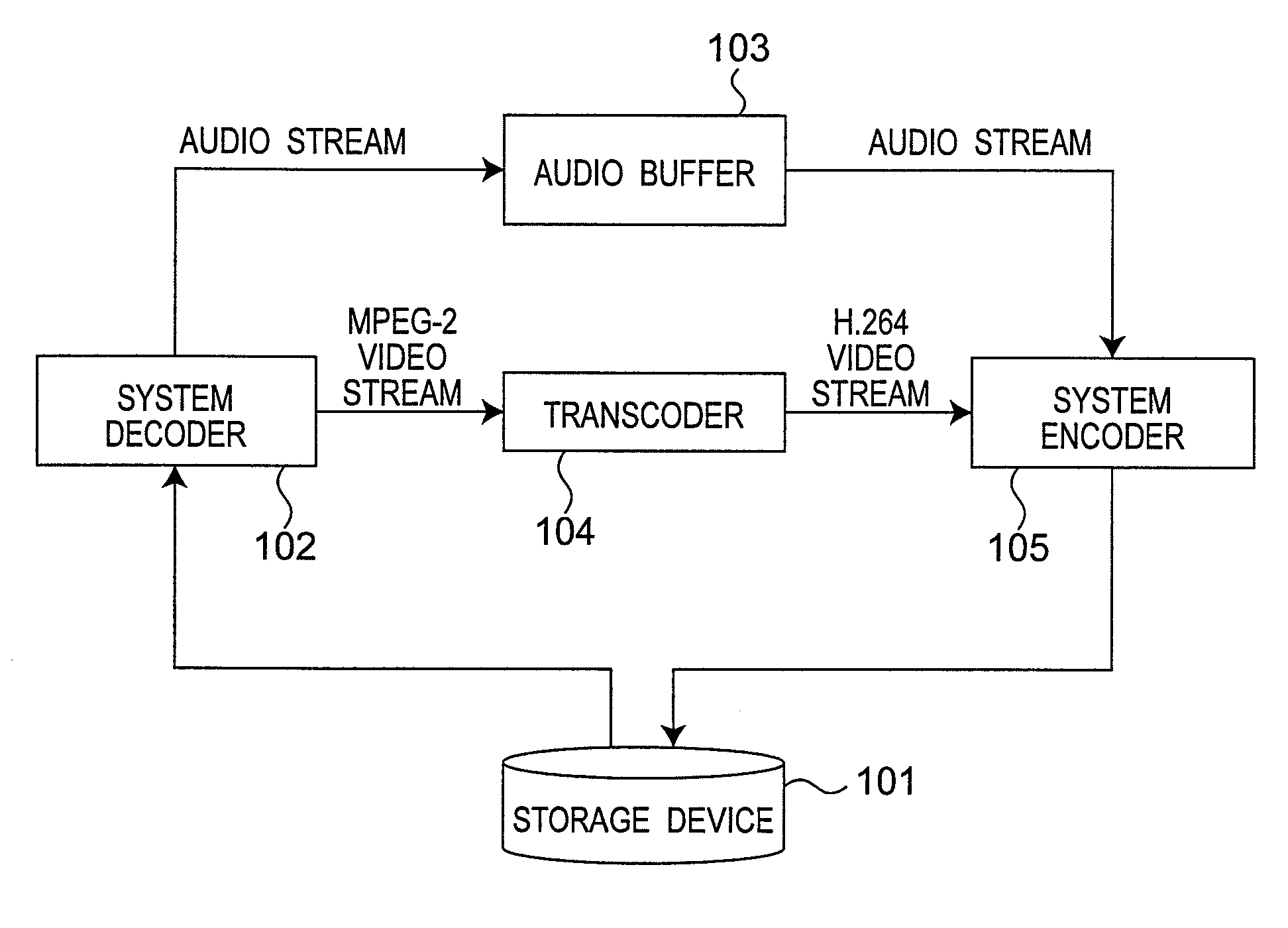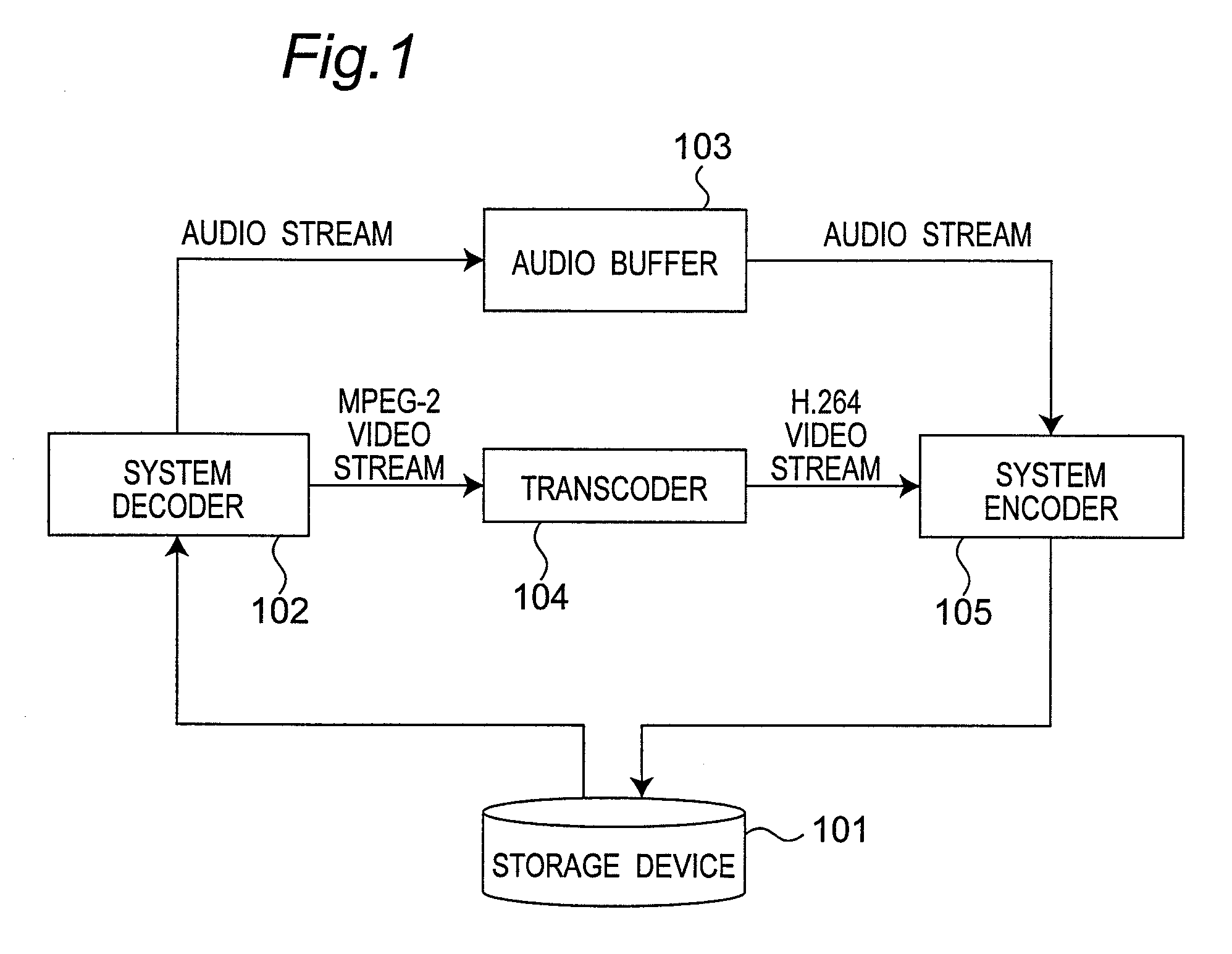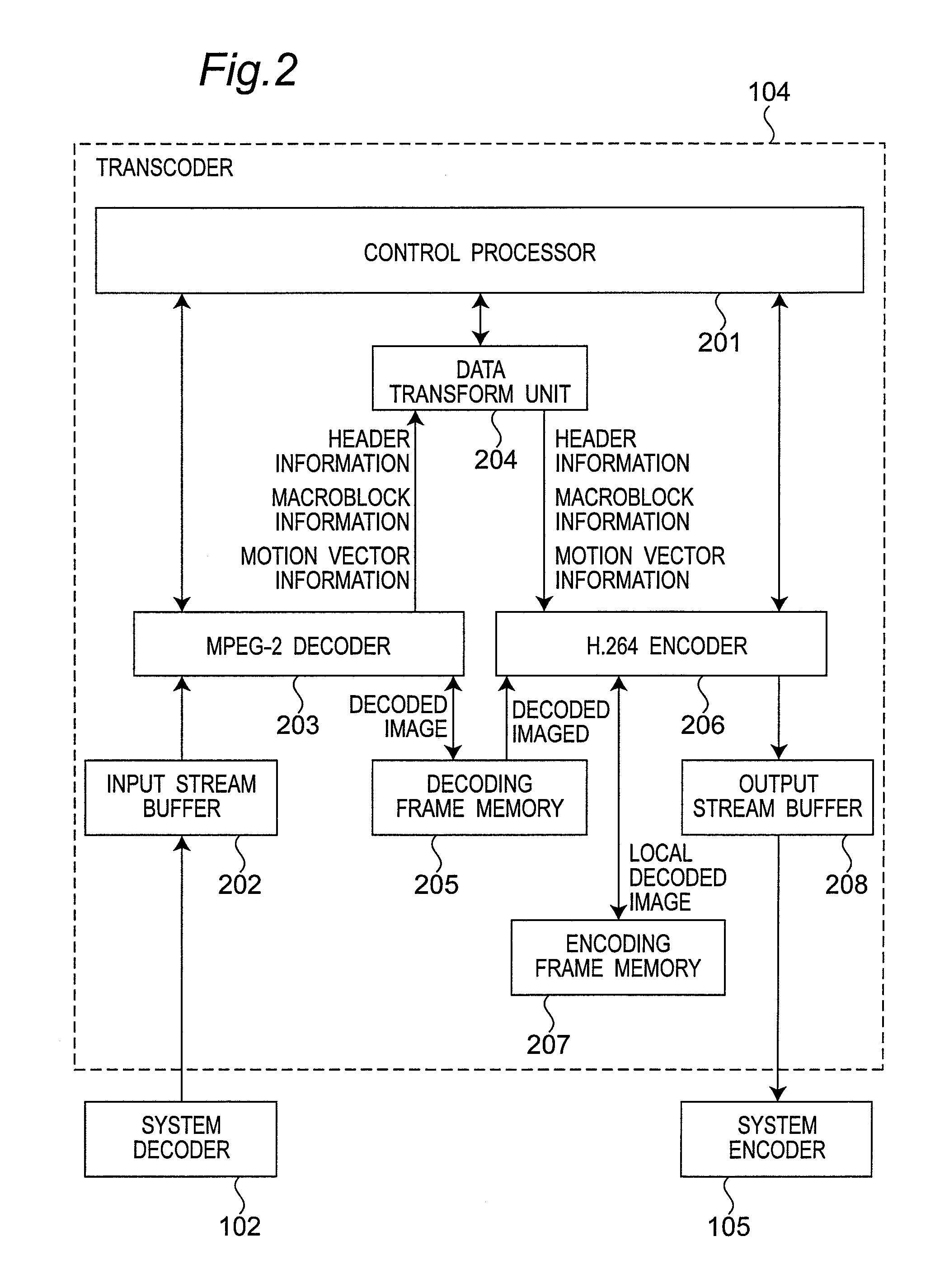Transcoding apparatus and transcoding method
a transcoding apparatus and transcoding technology, applied in the field of transcoding apparatus and transcoding method, can solve the problems of degrading image quality in the converted stream, motion vector cannot be used as motion vector after transformation, and severe image quality degradation, so as to prevent image quality deterioration and increase the circuit scale
- Summary
- Abstract
- Description
- Claims
- Application Information
AI Technical Summary
Benefits of technology
Problems solved by technology
Method used
Image
Examples
embodiment 1
1. Configuration
1.1 General Configuration of Transcoding Apparatus
[0071]FIG. 1 shows the configuration of a transcoding apparatus according to a first embodiment of the invention. The transcoding apparatus according to this embodiment of the invention has a storage device 101 for storing the compressed streams before and after transformation, a system decoder 102 for separating the compressed stream into an audio stream and a video stream, a transcoder 104 for standard transformation, an audio buffer 103 for storing the audio stream for a specific time, and a system encoder 105 for multiplexing the audio stream and video stream.
[0072] The storage device 101 stores a stream compressed according to the MPEG-2 standard, and an H.264 stream that is converted from the MPEG-2 stream.
[0073] The system decoder 102 reads the MPEG-2 compressed stream from the storage device 101, and separates the audio stream and the video stream from the read stream. The audio stream is output to the a...
embodiment 2
[0191] A second embodiment of the H.264 encoder 206 in the transcoder 104 in FIG. 2 is described next. While the H.264 encoder 206 in the first embodiment does not detect motion, the H.264 encoder of this embodiment detects motion only near the position indicated by the motion vector information in order to improve pixel accuracy.
[0192]FIG. 25 shows the arrangement of the H.264 encoder 250 according to this embodiment of the invention. The H.264 encoder 250 according to this embodiment of the invention differs from the H.264 encoder 206 of the first embodiment in that this H.264 encoder 250 has a motion detection unit 251 and a motion compensation unit 252 that operates differently from the motion compensation unit of the first embodiment. Parts in the H.264 encoder 250 of this embodiment that operate the same as the H.264 encoder 206 of the first embodiment are identified by the same reference numerals, and further description thereof is omitted. The motion detection unit 251 and ...
embodiment 3
1. Transcoder Configuration
[0199] Another configuration of the transcoder 104 in FIG. 1 is described next. The transcoder 104 decodes the MPEG-2 picture, restores the original image from a difference image, and then re-encodes a H.264 picture. In order to reduce the decoding and encoding operations, the transcoder 104 according to this embodiment of the invention transcodes to an H.264 picture from the difference image without returning the MPEG-2 picture to the original image.
[0200]FIG. 26 shows the internal configuration of the transcoder 104 in this embodiment of the invention. Like parts in this and the first embodiment are identified by the same reference numerals in FIG. 26, and further description thereof is omitted. The transcoder 104 in the first embodiment has a decoding frame memory 205 and encoding frame memory 207, but the transcoder 104 in this embodiment has a difference memory 261 instead of a decoding frame memory 205 and encoding frame memory 207. The difference...
PUM
 Login to View More
Login to View More Abstract
Description
Claims
Application Information
 Login to View More
Login to View More - R&D
- Intellectual Property
- Life Sciences
- Materials
- Tech Scout
- Unparalleled Data Quality
- Higher Quality Content
- 60% Fewer Hallucinations
Browse by: Latest US Patents, China's latest patents, Technical Efficacy Thesaurus, Application Domain, Technology Topic, Popular Technical Reports.
© 2025 PatSnap. All rights reserved.Legal|Privacy policy|Modern Slavery Act Transparency Statement|Sitemap|About US| Contact US: help@patsnap.com



